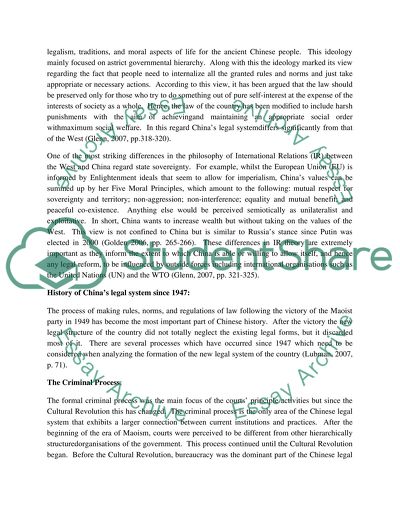Cite this document
(“Development of Chinas legal system and its difficulties and challenges Essay”, n.d.)
Retrieved from https://studentshare.org/law/1393949-development-of-chinas-legal-system-and-its-difficulties-and-challenges
Retrieved from https://studentshare.org/law/1393949-development-of-chinas-legal-system-and-its-difficulties-and-challenges
(Development of Chinas Legal System and Its Difficulties and Challenges Essay)
https://studentshare.org/law/1393949-development-of-chinas-legal-system-and-its-difficulties-and-challenges.
https://studentshare.org/law/1393949-development-of-chinas-legal-system-and-its-difficulties-and-challenges.
“Development of Chinas Legal System and Its Difficulties and Challenges Essay”, n.d. https://studentshare.org/law/1393949-development-of-chinas-legal-system-and-its-difficulties-and-challenges.


